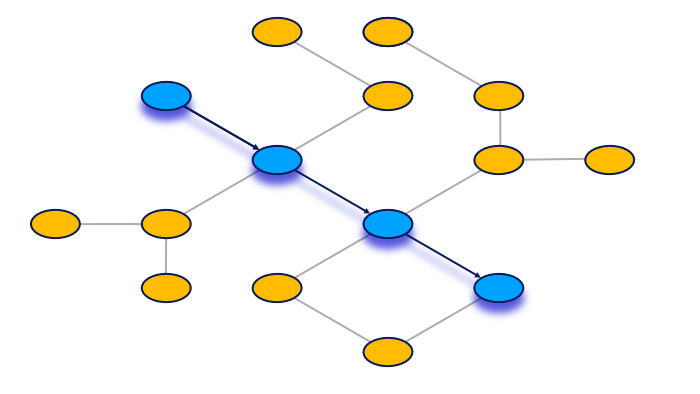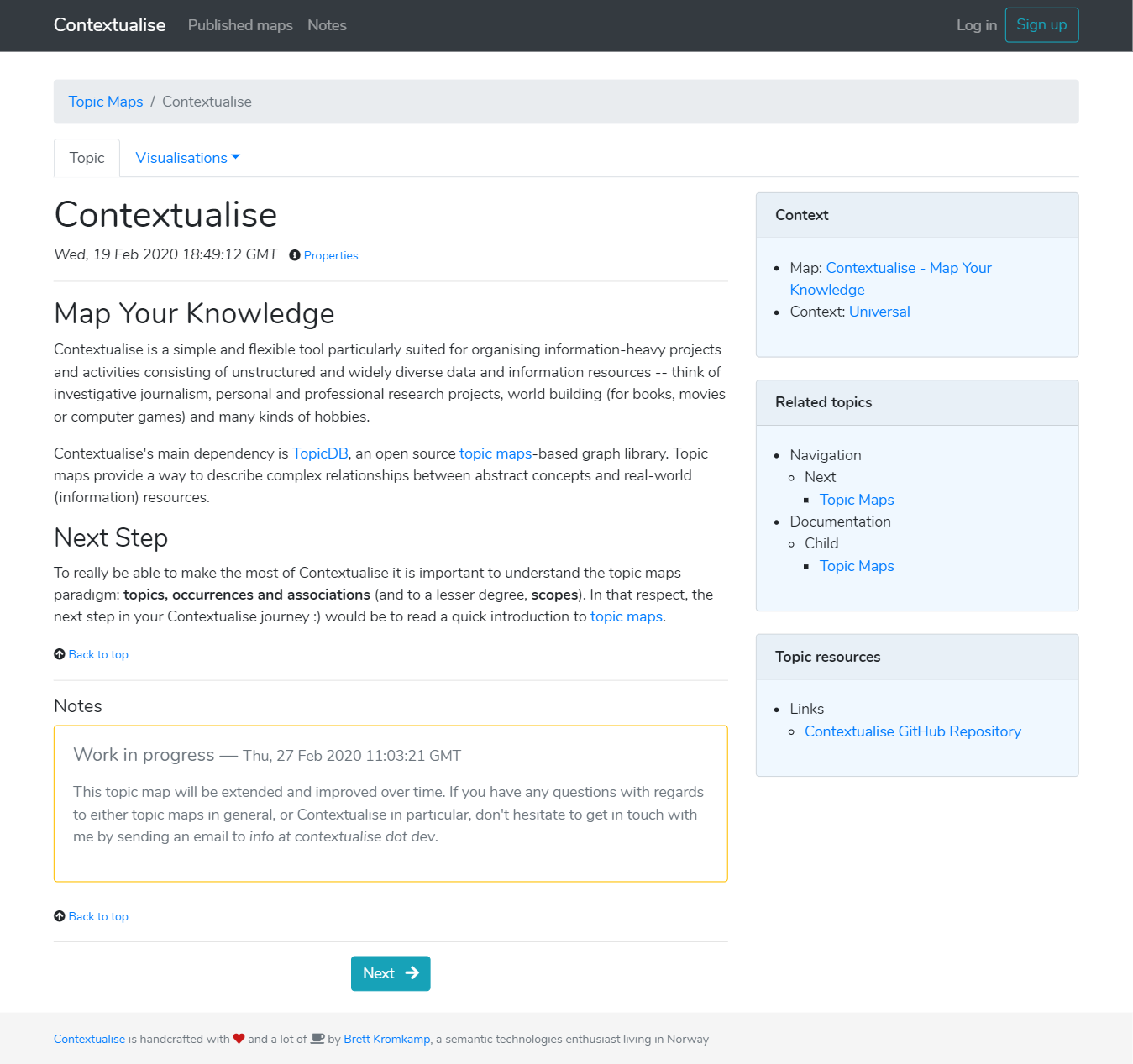Knowledge Paths

Anything other than a trivial topic map can be difficult to navigate without getting lost. Knowledge paths can help in this situation.
A knowledge path, as its name implies, allow you to get around a topic map in a straightforward and consistent manner while still allowing you to take a left or a right turn and explore related topics. And once you have finished exploring you can return to where you left off and continue your journey along the path.

It’s easy to create a knowledge path in Contextualise. All you have to do is add an association of type “navigation” with an appropriate role for the topics in question, one of “previous”, “next”, “up” or “down”. Also, there are no limits to the number of knowledge paths you can have in any given topic map.
The knowledge paths feature has already been made available (for testing) in Contextualise. Basically, how it works is that if a topic is detected to be part of a knowledge path then a separate navigation component will be displayed at the bottom of the page allowing the user to easily navigate between the topics on the path by just clicking on the appropriate next, previous, up and down buttons (see the screen shot, below). There is more to come with regards to knowledge paths in Contextualise. Nonetheless, for the time being, I want to see if this still quite limited feature has potential.

If you have any feedback with regards to the knowledge paths feature, or if you come across a bug then just let me know by creating an issue in the Contextualise repository on GitHub.